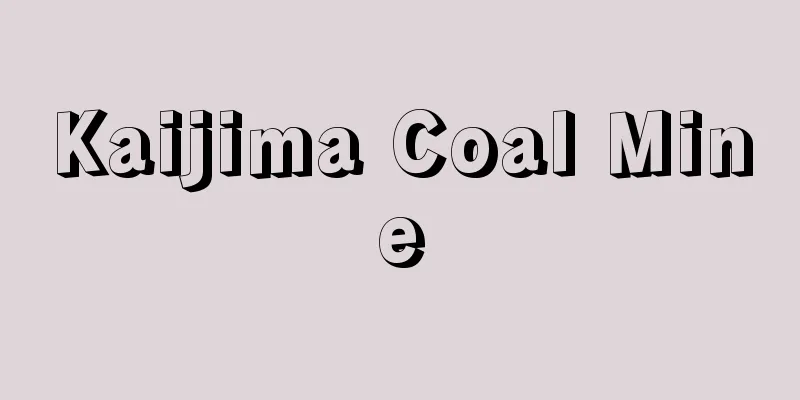Chromophore - Chromophore

|
A group of atoms that is thought to be necessary for a compound to have color. In 1876, German chemist Witt published a theory on the color development of organic compounds, stating that in order for a substance to have color, it is necessary for the substance's molecules to contain atomic groups called chromophores, and he named compounds containing chromophores chromogens. A chromogen by itself has a faint and shallow color and cannot be used as a pigment, but when a specific group is introduced into it, the color becomes stronger and deeper, and it becomes easier to dye fibers, giving it the properties of a dye. He named groups with this function auxochromes. This idea is reasonable even from the perspective of current color development theories, as it indicates groups with double bonds bonded to aromatic rings as chromophores and groups that can be ionized with high polarity as auxochromes, and these terms have been used to this day. All of the atomic groups that make up the chromophores contain unsaturated bonds and have π (pi) electrons, which are weakly bound, so they absorb the energy of visible light, become excited, and acquire color. For example, azobenzene has an azo group as a chromophore and is orange in color, but since it has no auxochrome, it is pale in color and has no dyeing properties, so it cannot be used as a dye. However, when an amino group is added to the para position, 4-aminoazobenzene ( p (para)-aminoazobenzene), an auxochrome is introduced and it becomes a yellow dye (called Sudan Yellow RA). Nowadays, with the development of quantum mechanical color theory and the elucidation of the nature of selective absorption of light by substances, a chromophore is an atom or group of atoms that absorbs light, mainly including ultraviolet light, and an auxochrome is an atomic group that affects the function of π electrons in a system. The effect of an auxochrome on a chromophore can be either a bathochromic effect (hypochromic) or a hypsochromic effect (hypochromic). [Nakahara Katsunori] ©Shogakukan "> Chromophores and auxophores Source: Shogakukan Encyclopedia Nipponica About Encyclopedia Nipponica Information | Legend |
|
化合物が色をもつために必要と考えられている原子団のこと。 1876年にドイツの化学者ウィットが発表した有機化合物の発色に関する理論では、色をもつためには物質分子中に発色団と称する原子団をもつことが必要であるとし、発色団を含む化合物を色源体chromogenと名づけた。色源体自身では色が薄く、しかも浅く、色素とはなりえないが、これに特定の基を導入すると、色は強度を増すうえに深くなり、さらに繊維に染着しやすくなって染料としての特質をもつようになるとし、このような働きをもつ基を助色団auxochromeと名づけた。この考え方は、発色団としては芳香環に結合した二重結合のある基や、助色団として極性の大きいイオン化できる基などを指示しているなど、現在の発色理論からみても合理的な点があり、これらの語が現在に至るまで用いられている。 発色団となる原子団はいずれも不飽和結合を含んでいてπ(パイ)電子をもち、π電子が弱く束縛されているので、可視光線のエネルギーを吸収して励起され、色をもつようになる。たとえば、アゾベンゼンは発色団としてアゾ基をもっていて橙(だいだい)色であるが、助色団をもっていないので、色が薄く、また染着性もなくて染料にはならない。しかしこれにパラ位にアミノ基を入れた4-アミノアゾベンゼン(p(パラ)-アミノアゾベンゼン)は、助色団が導入されたため黄色の染料となる(スダンエローRAとよばれている)。 現在では量子力学による発色理論が発展し、物質による光の選択吸収の本質が解明され、発色団とは主として紫外部を含む光を吸収する原子または原子団をいい、助色団とは系内のπ電子の働きに影響を与える原子団をいうようになった。発色団に対する助色団の効果は、深色効果を示す(深色団)こともあれば、浅色効果を示す(浅色団)こともある。 [中原勝儼] ©Shogakukan"> 発色団・助色団 出典 小学館 日本大百科全書(ニッポニカ)日本大百科全書(ニッポニカ)について 情報 | 凡例 |
<<: Passion fruit - Passion fruit (English spelling)
>>: Color development - Hashokugenzo
Recommend
Yen Taxi - Entaku
Abbreviation for 1 Yen Taxi. It is a taxi fare sy...
Capitonidae
… any bird of the family Capitonidae (barbet), or...
Shirouo (soda fish) - Shirouo (English spelling) ice goby
A coastal fish of the Goby family in the Perciform...
glide ratio
…The angle that the flight path makes with the ho...
Berle, AA (English spelling) BerleAA
… The first is the separation of ownership and ma...
Boito, Arrigo
Born: February 24, 1842 in Padua Died June 10, 191...
Kamoinariyama Kofun
...The stones of the stone house and the mortuary...
Magnetic map - magnetic field
A diagram showing the geomagnetic field measured a...
Air caisson
...The caisson method, which uses caissons to bui...
A playful essay
Southern Chinese drama. Also known as Nanqu. North...
Hanging (clothing) - Hanging
…(1) It refers to the riyoutou (pants) worn by mi...
Shinsaibashi-suji
A street that runs from north to south through th...
Genos
…To protect their members and to defend their int...
Act of Uniformity of Worship - Reihaitoitsuho (English spelling)
Acts of Parliament issued in 1549, 1552, 1559, an...
All-in-one
A type of underwear or foundation. A combination o...









